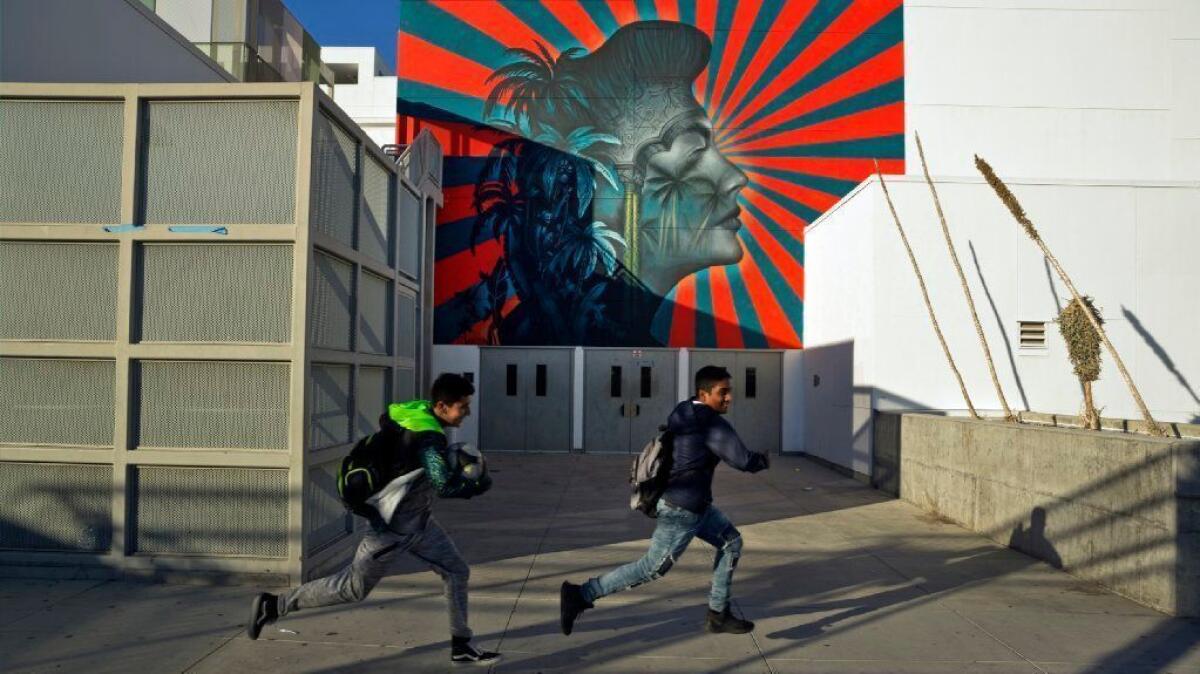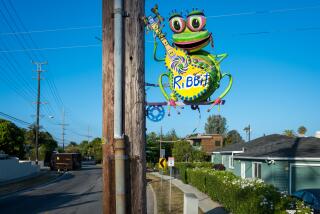Readers React: Koreatown residents are deeply offended by a mural in their community. That should matter

To the editor: Public art has no right to exist absent any criticism, especially if it is on a publicly owned venue like the Ava Gardner mural at a public school in Koreatown. Art almost always bothers or offends someone, and I for one am willing to extend tolerance for art that I do not appreciate or even understand.
However, I do not pretend to understand the depths of feelings of those who find the Gardner mural offensive. This is a matter of respect, and nothing causes more strife than a lack of respect.
Society in general and the Los Angeles Unified School District in particular should not overreact to gadflies, but we all should appreciate the sincere feelings of our neighbors. Public spaces, and especially one such as the wall of a school in Koreatown, should be models of respectful behavior, even if this aggravates an artist.
E.J. Parker, Long Beach
..
To the editor: I collaborated with fellow artist Richard Wyatt Jr. in the design of the Robert F. Kennedy Inspiration Park in Koreatown. I see the controversy over artist Beau Stanton’s mural as an issue involving awareness.
If the members of the Wilshire Community Coalition were more aware of artists using the sunburst design with various color combinations throughout history, they would be less likely to find offense with the one in Stanton’s mural.
The Los Angeles Unified School District’s initial plan to whitewash the mural is an example of unawareness regarding the dangers of art censorship and the lack of efforts to bring about communication. In the public art field, the community is almost always invited to preview the artist’s initial concepts and voice their concerns.
The hurt and indignation experienced by the Wilshire Community Coalition upon seeing a sunburst design that does not even represent the colors or design of the Japanese imperial flag is a testament to the everlasting memory of war and colonial atrocities. However, Stanton’s mural does not warrant such associations.
I commend Shepard Fairey for his passion in defending his fellow artist against an act of hasty censorship. Perhaps the teachers can incorporate this controversy in their lesson plans and the students can benefit from voicing their opinions while learning about art and world history.
May Sun, Culver City
..
To the editor: Several articles and an editorial have been published in the Los Angeles Times on the controversy over the sunburst pattern that serves as the background of a mural adorning an L.A. public school building. Still, I have yet to read any suggestion that we simply modify the background and leave the heart of the piece intact.
Having done commission work as a designer and digital artist for decades, I don’t understand why the artist can’t take into account the needs of his client and the community at large. It would be one thing if the piece was intended to make a political statement from the beginning, but presumably the assignment was for a decorative piece that paid homage to the location.
This mural can still be that. Unfortunately, few people seem willing to compromise for the greater good.
Philip Hindenach, Reseda
Follow the Opinion section on Twitter @latimesopinion and Facebook
More to Read
A cure for the common opinion
Get thought-provoking perspectives with our weekly newsletter.
You may occasionally receive promotional content from the Los Angeles Times.










